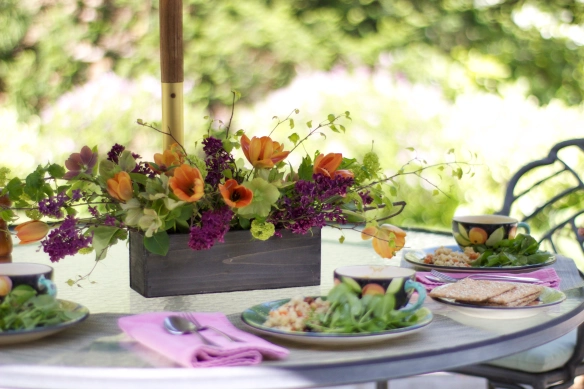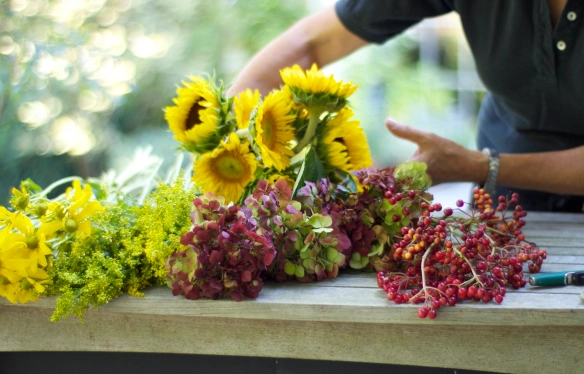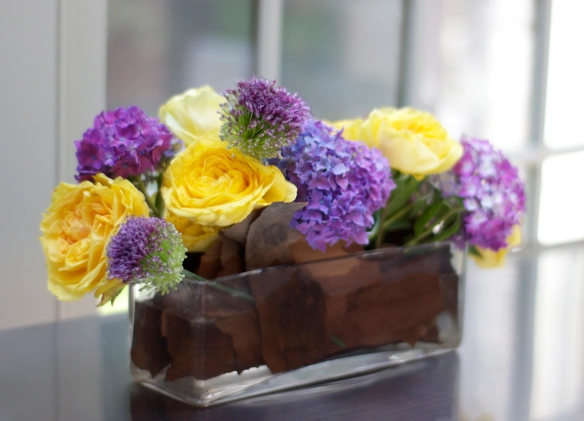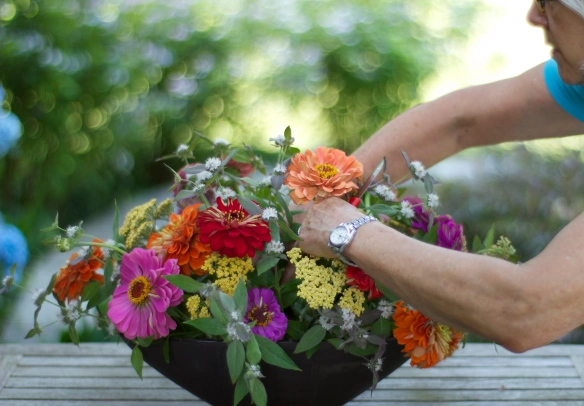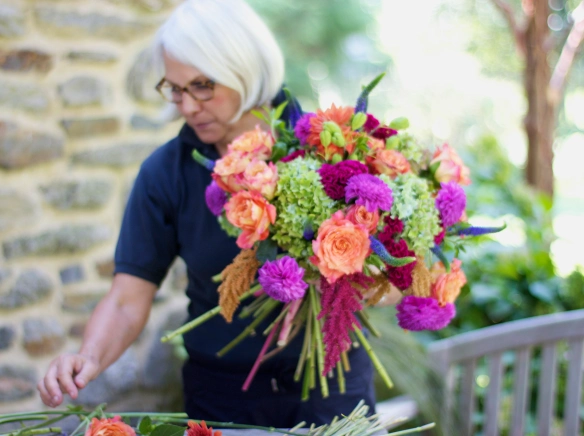Jane Godshalk, AIFD floral designer and instructor at Longwood Gardens, is now also an author! Her new book, titled Flower Arranging Secrets: Natural Designs for Everyday Living, offers tips and tricks acquired throughout Jane’s decades of floral design experience. Some of my photographs are featured throughout the book, and I feel lucky to have been a small part of Jane’s incredible floral world.
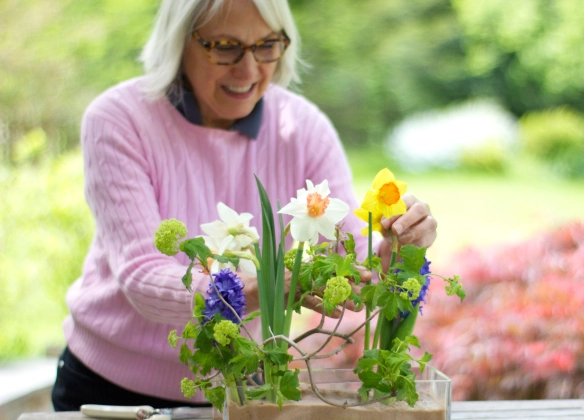
Jane makes it look easy. Buy her book, and it will be easy for you too! Here she is making an early spring parallel design using sand to hold the stems in place.
Jane has studied floral design internationally, is a longtime faculty member at Longwood Gardens, and is an award-winning floral designer whose work has been featured in publications such as the Pennsylvania Horticultural Society’s Green Scene magazine.
At the heart of Jane’s book is the idea that floral design is for everyone, and the book aims to “demystify the process of arranging flowers for your home.” Jane gives advice on how to select material and where to find it, how to care for stems once you’ve purchased them, which vases and containers to use, and design tactics such as color, stem placement, and rules of proportion.

Spring Design by Jane using chicken wire for mechanic, featuring peonies and materials from her garden. Behind the scenes shot.
Jane empowers everyday floral designers by giving us the “how to” in a clear, simple fashion – and all the design mechanics she uses in the book are sustainable (can be reused or recycled.) In other words, no floral foam! One of her tried-and-true methods of anchoring flowers is by using chicken wire. She also shows us how to use branches, bark, grapevine, and even sand as the mechanic for holding stems in place.
Jane shares many other secrets, such as the proper use of a kenzan or frog, how to create a hand-tied bouquet (a personal favorite!) and how to successfully incorporate fruits and vegetables into your design. There is also a handy flower identification chart included. Jane’s new book showcases beautiful, eco-friendly and easy floral designs for everyone from beginners to experts. I highly recommend it. Congratulations, Jane. It was so thrilling to work with you, and I am continually inspired by your knowledge and talent.
Want the book? Buy it from Jane’s website for $24.99. Or, take a class from Jane at Longwood Gardens!


